Submitted by WA Contents
Avanto Architects creates stepped wooden public sauna on Helsinki seashore
Finland Architecture News - Dec 27, 2017 - 19:54 30096 views
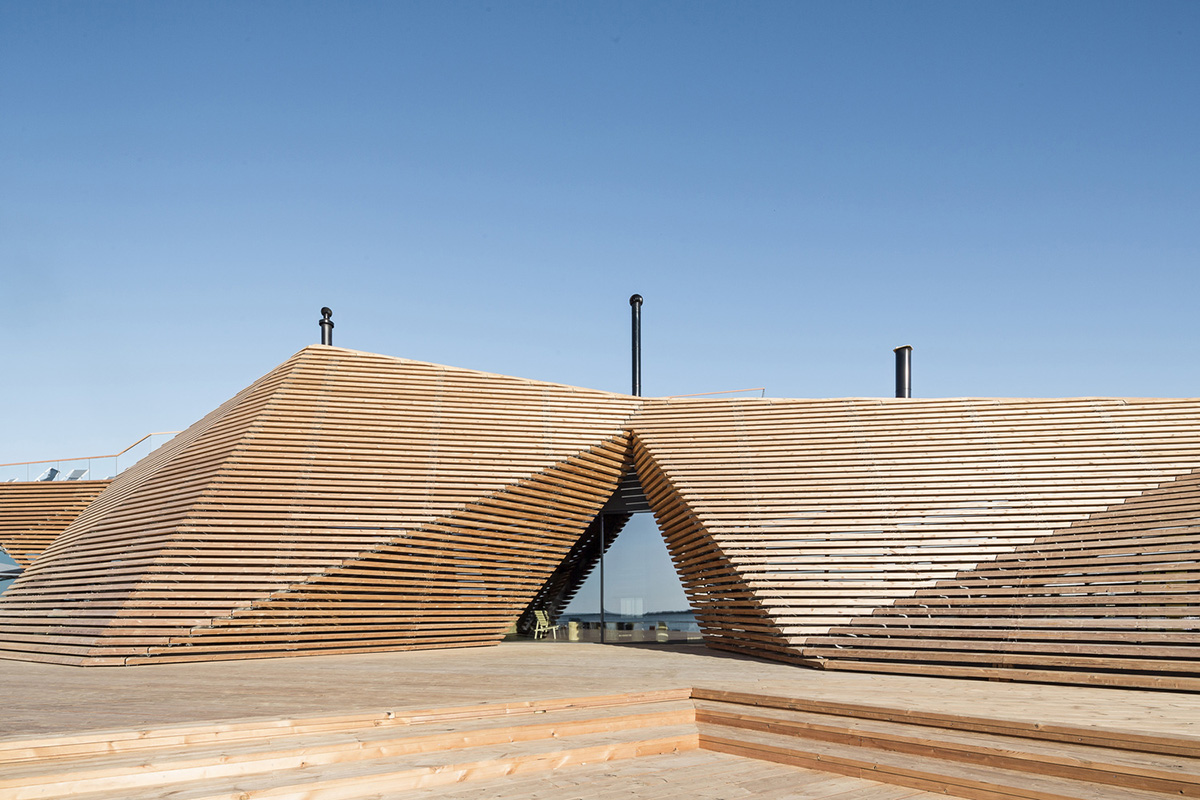
Helsinki-based architecture firm Avanto Architects has designed a stepped sculptural volume to revive the culture of public sauna in a former industrial area on the Helsinki seashore, which is now being developed into a residential area. Named Löyly, the project is located in Hernesaari, a former industrial area on the Helsinki seashore, less than two kilometers away from the city centre.
The building was designed to be slim and elongated so as not to cut the narrow park strip. The site takes place in a very strategic location, in a future coastal park that will be part of a broader "Helsinki park" conncting the capital city to the sea.
"Sauna bathing is an essential part of Finnish culture and national identity. There are only 5,4 million Finns but 3,3 million saunas. Public saunas used to be common in bigger cities but now that most new apartments have sauna of their own, public saunas have decreased dramatically in number," said the architects.
"There are only a couple remaining. As a sense of community is becoming a more and more important part of new urban culture, many new public saunas are being planned. With Löyly (meaning the steam that comes when you throw water on hot stones in a sauna) Helsinki will offer foreign visitors a public sauna experience all year round - a must when visiting Finland."
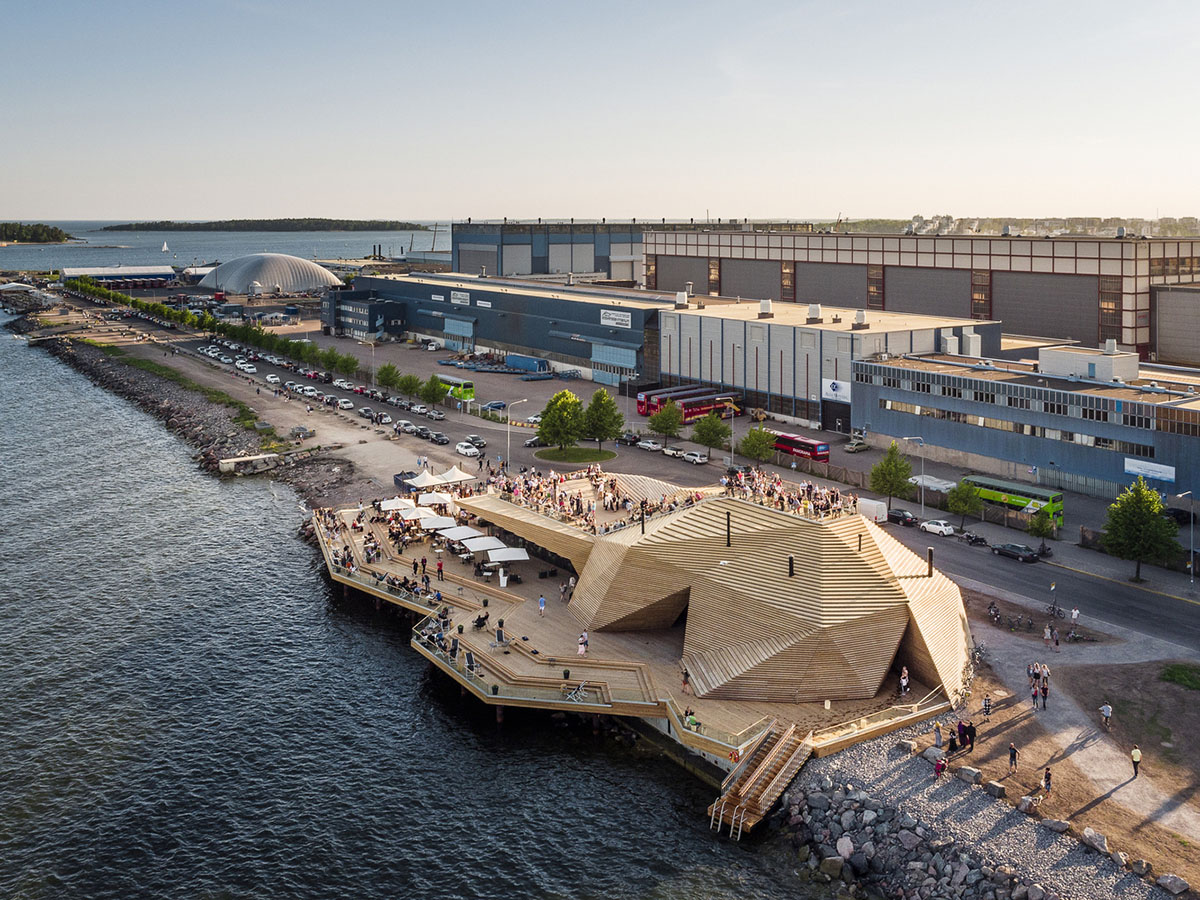
The architects kept the volume as low as possible so that it doesn't block views from the future residential blocks. Instead of building a conventional building, the sauna is developed into an easy-going, faceted construction that is more part of the park than a conventional building. When the wooden building turns gray, it will become more like a rock on the shoreline.
Wrapped up with a free form wooden "cloak", a rectangular black box contains the warm spaces inside. The architects created a sculptural structure made of heat treated pine has several functions instead of creating mere decoration.
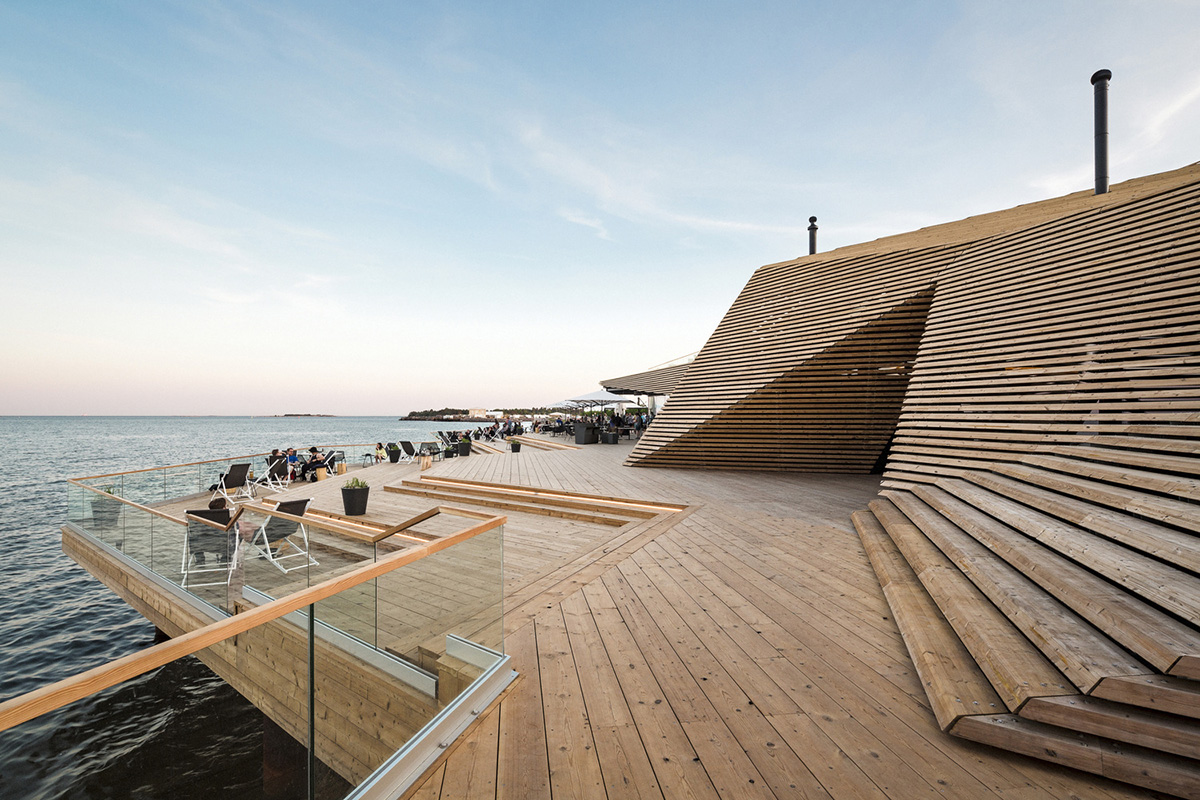
Providing a visual privacy, the lamellas don't limit the sea view from inside it, rather they function like venetian blinds and blocking the views from outside.
There are sheltered outside spaces between the warm mass and cloak to cool down in between sauna bathing. The cloak forms intimate terraces between its slopes that serve as a place to sit.
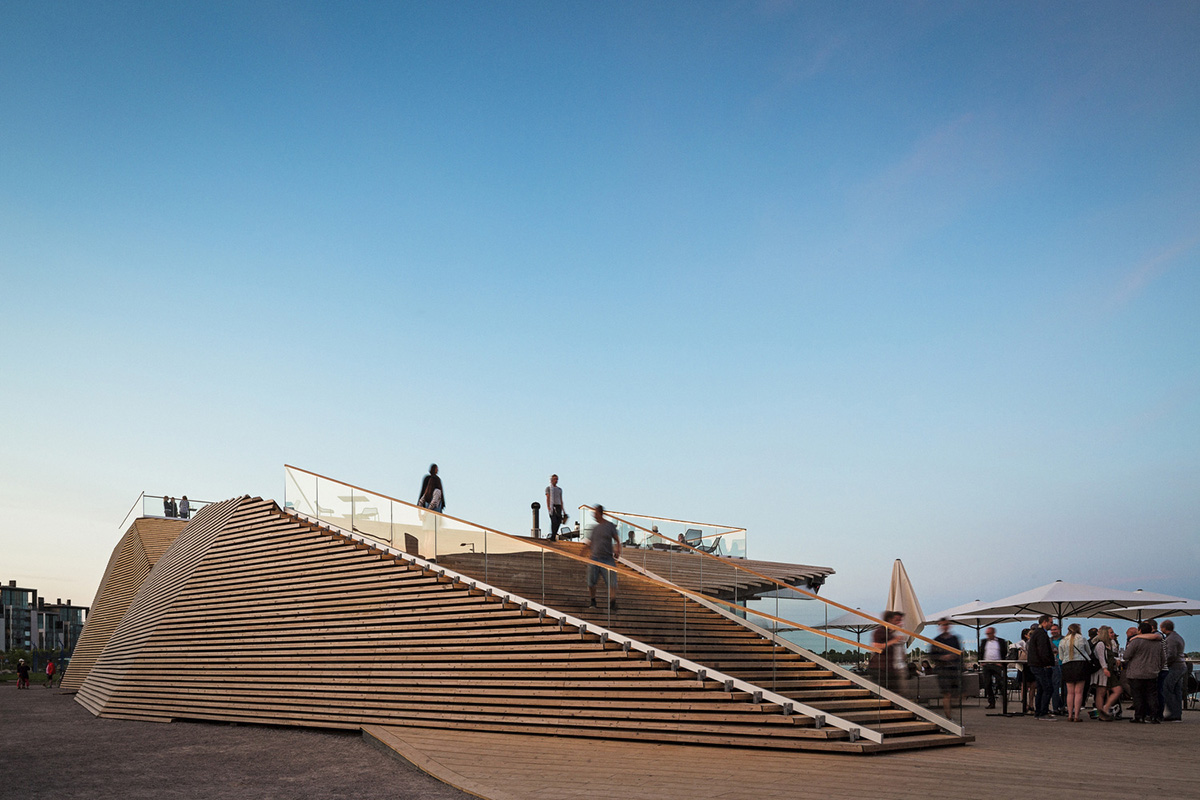
"The structure protects the building from the harsh coastal climate. It shades the interior spaces with big glass surfaces and helps to reduce the use of energy to cool the building. Moreover, the stepped cloak forms stairs to climb on to the roof and look out terraces on top of the building. The construction forms a big outdoor auditorium for the future marine sports centre's activities on the sea," said Avanto Architects.
"There are around 4000 planks that were precisely cut to individual forms by a computer-controlled machine. The big wooden terrace is partly on top of the sea and you can hear the sound of the waves under your feet," the studio added.
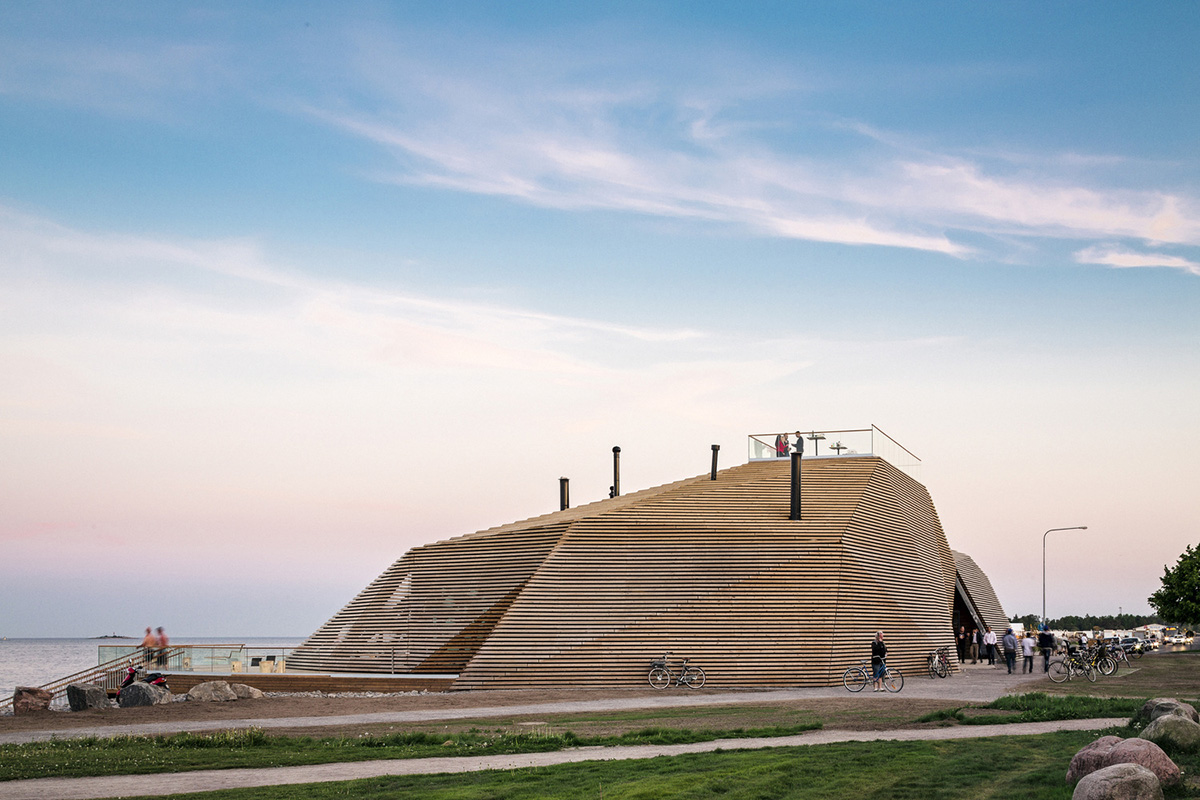
The building is composed of two parts: public saunas and a restaurant. The saunas and public spaces open up to the sea, with interesting views to city center and even to the open sea.
The atmosphere is calm and the spaces dimly lit. Different areas are conceived as spaces within a space. Interesting views open between closed spaces as you move from one area to the next. Visitors enter in the restaurant that is a light and open space. From there a dimly lit sauna path leads to bathing area.

Shoes are left in a wardrobe before you go to a reception desk where you get a locker key and a towel. Dressing rooms and showers are separate for men and women.
A leather curtain covering the door indicates entry into the unisex area, at which point visitors need to wear a bathing suit. Traditionally men and women bath separately and naked.
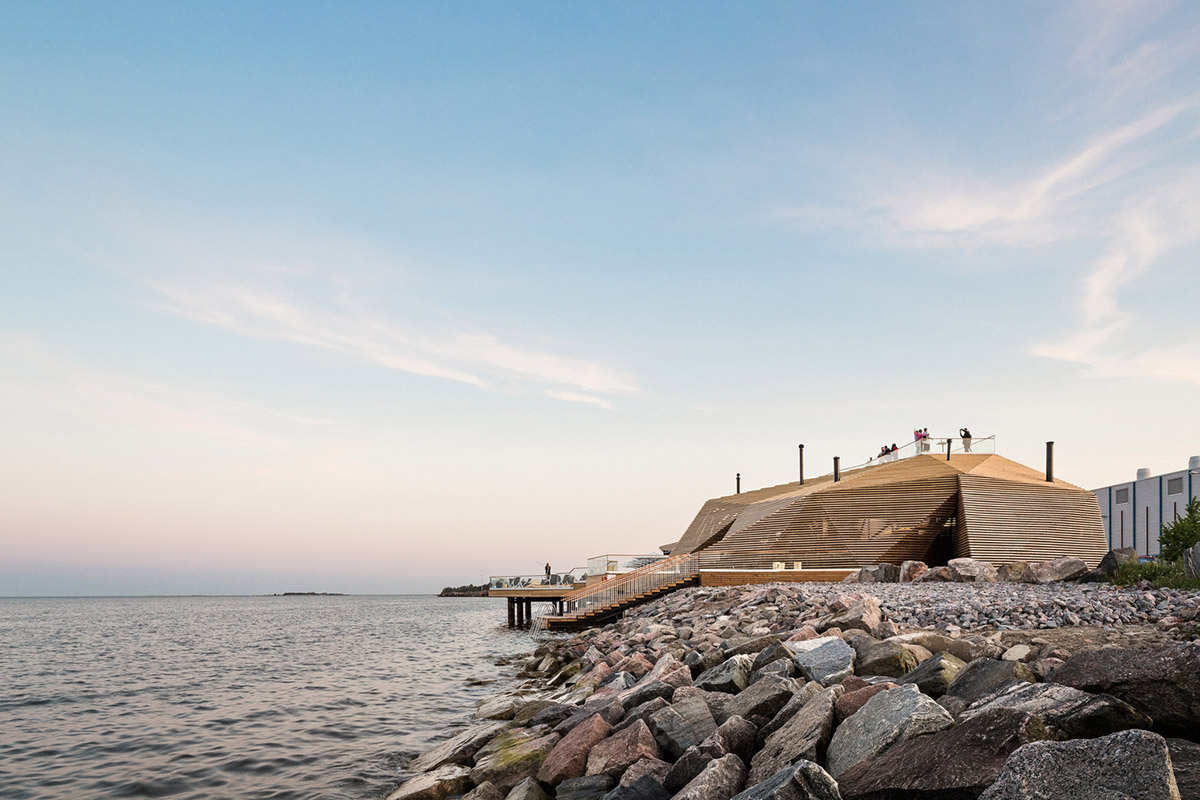
"We wanted to develop sauna culture so that there would be a possibility bath together with your friends not depending on the gender. This makes sauna experience available also for foreign visitors that might not be used to bathing naked," added the studio.
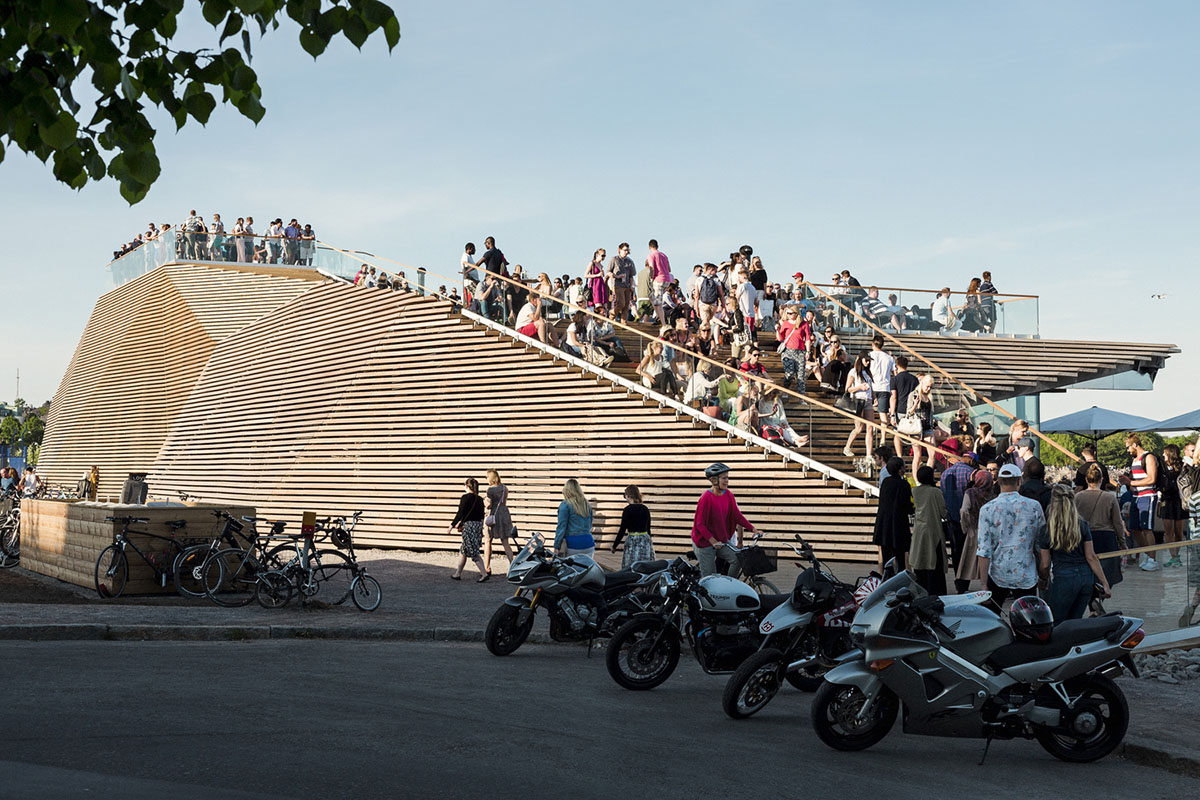
The interior architecture of the restaurant and the sauna lounge iare designed by Joanna Laajisto Creative Studio. The objective of the design was to create an atmospheric restaurant which compliments the strong architecture of the building.
The architects called this architecture as "soft minimalism," and the challenge was to create intimate seating areas in the large hall like space with two walls of windows, according to the architects.
"People often feel most comfortable sitting their backs against the wall. The solution was to build a raised platform for the bar area which divides the space into two different areas. A wooden half wall anchors the long custom designed sofas which have a great view of the sea," they added.
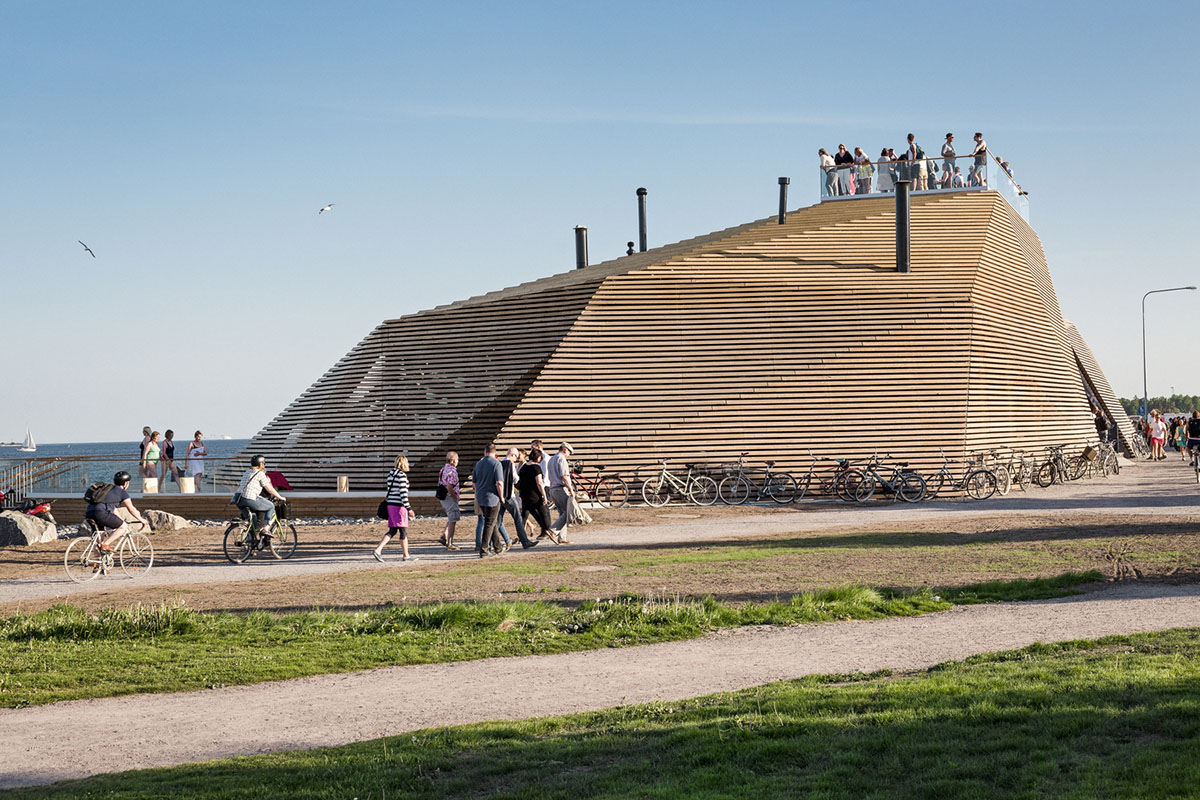
The studio uses in the interiors black concrete, light Scandinavian birch wood, blackened steel and wool as the main materials because of their durability and and persistency.
"The wood used is pressed, glued and slightly heat treated birch, a new sustainable Finnish innovation made of left over materials of the plywood industry that normally is burned to produce energy," the studio added.
"This is how waste is turned into a beautiful recycled material. It's manufacturing process produces a beautiful cool light color tone and heavy durability."
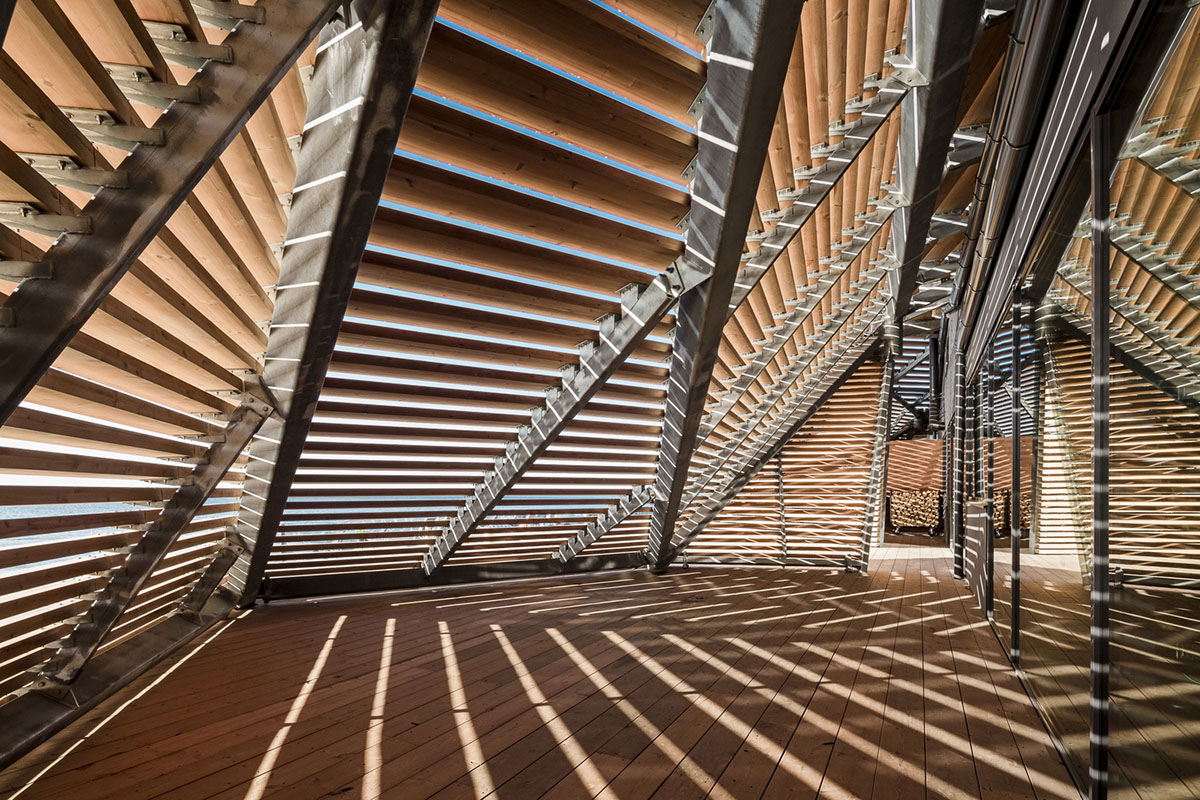
There are three different saunas that are all heated with wood: a continuously heated sauna, a once heated sauna (that is heated in the morning before the sauna is open and stays warm all evening) and a traditional smoke sauna – a true rarity in an urban sauna. This is how you can experience all sorts of Finnish Löyly during a single visit.

Between the saunas there is spa area with cold water basin and a fire place room to relax in, between or after sauna bathing. You can swim in the sea and in the winter there is an "avanto", the whole in the ice for winter swimming – a popular hobby in Finland and our office name as well.
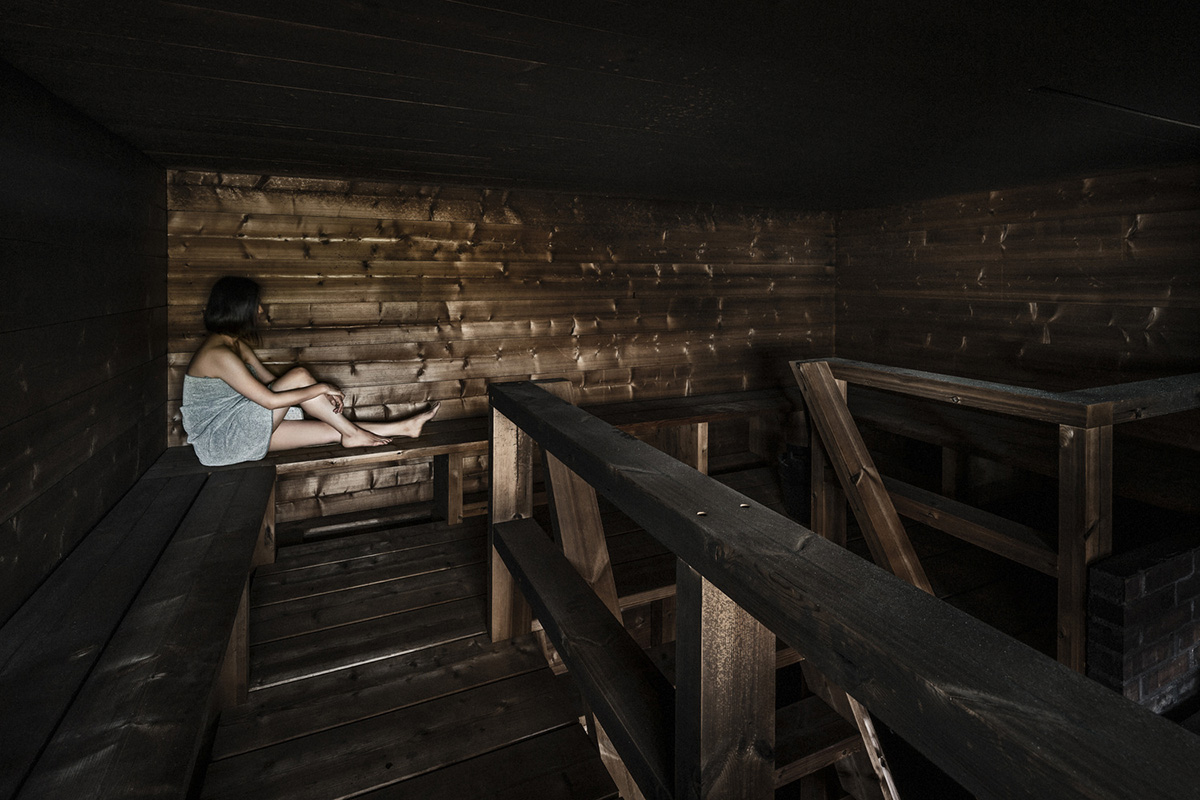
The building is heated with district heating and electricity is produced with water and wind power. The building is first FSC-certified building in Finland and second in Scandinavia.
Forest Stewardship Council’s certificate proves that wood material comes from responsibly managed forests. The restaurant serves organic food and sustainably caught fish.
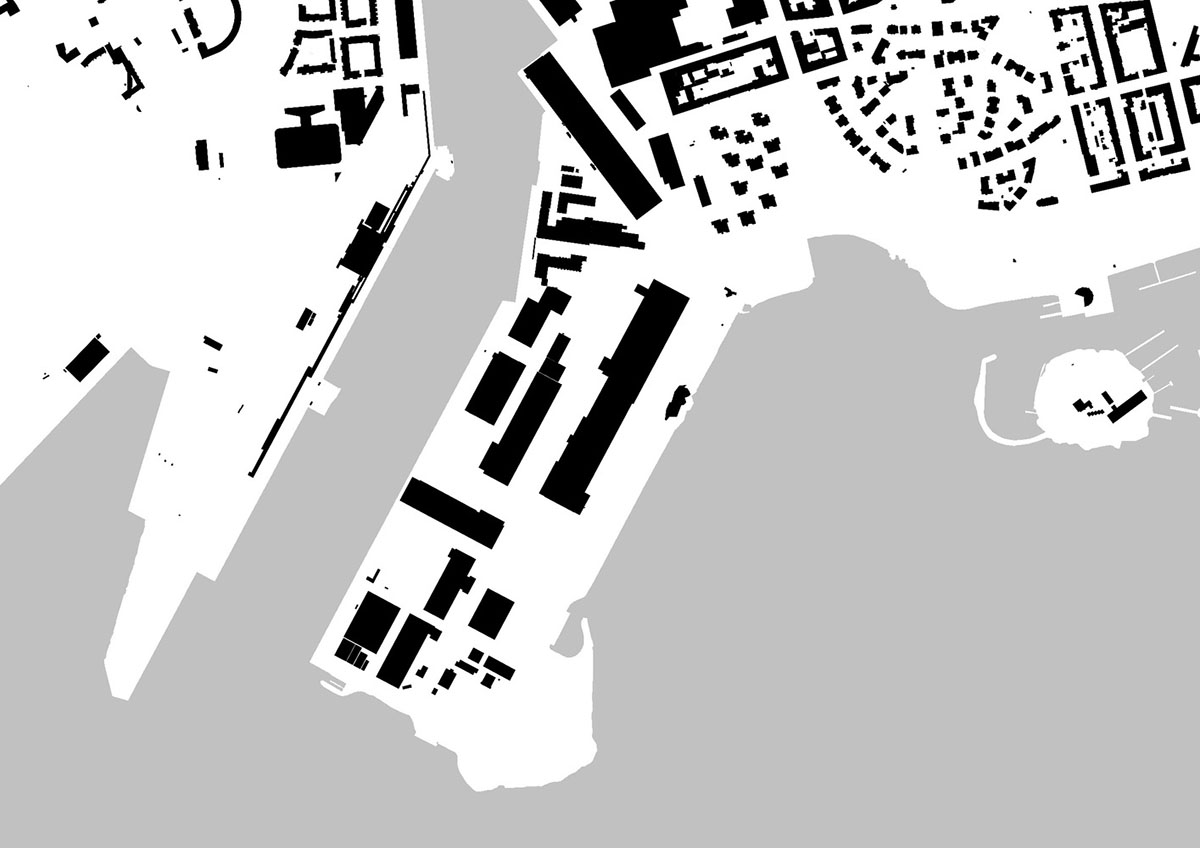
Plan of current city structure
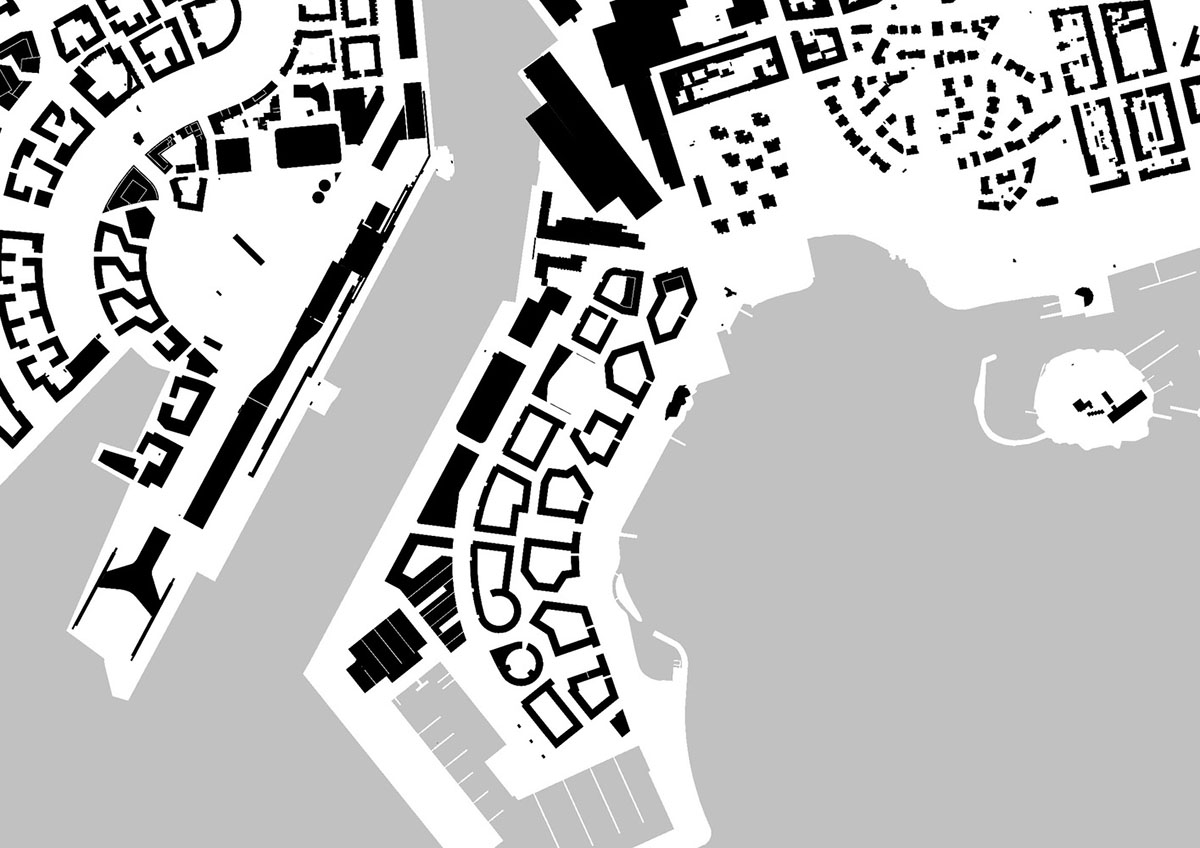
Plan of future city structure
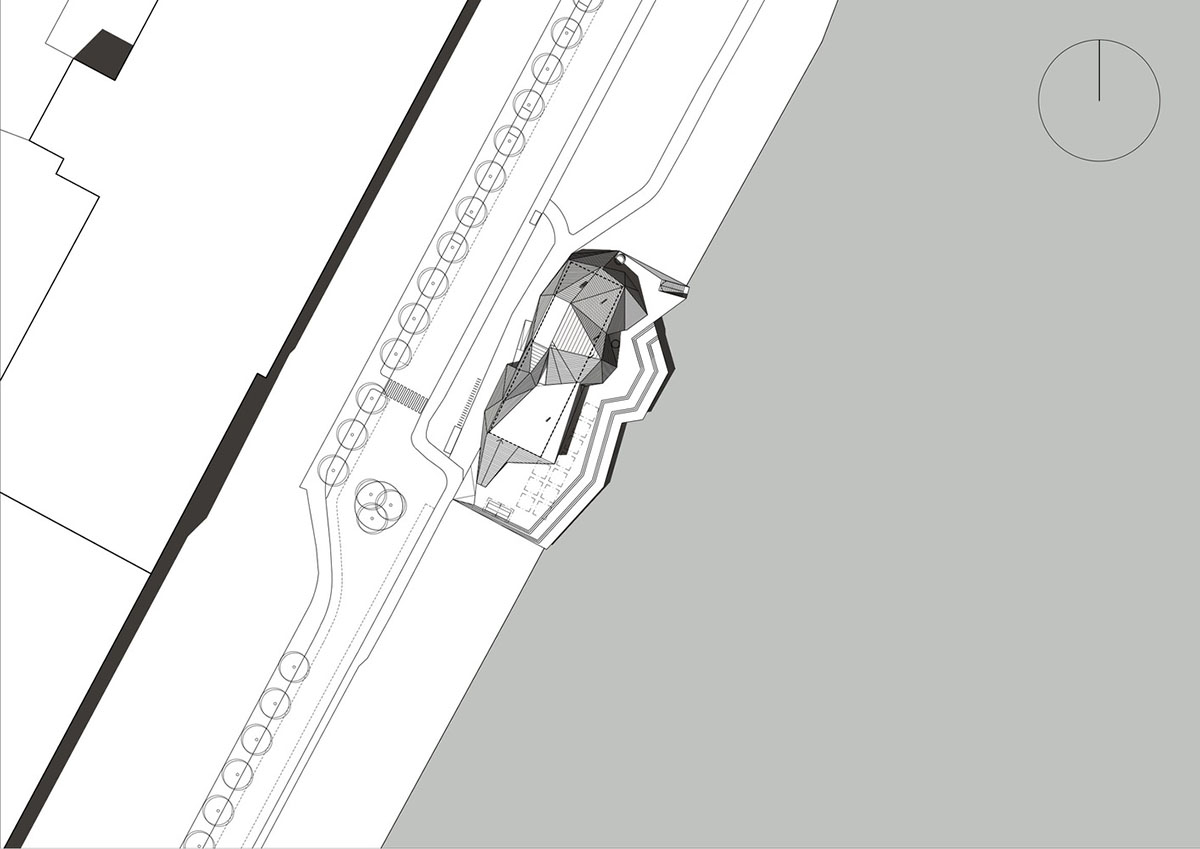
Site plan
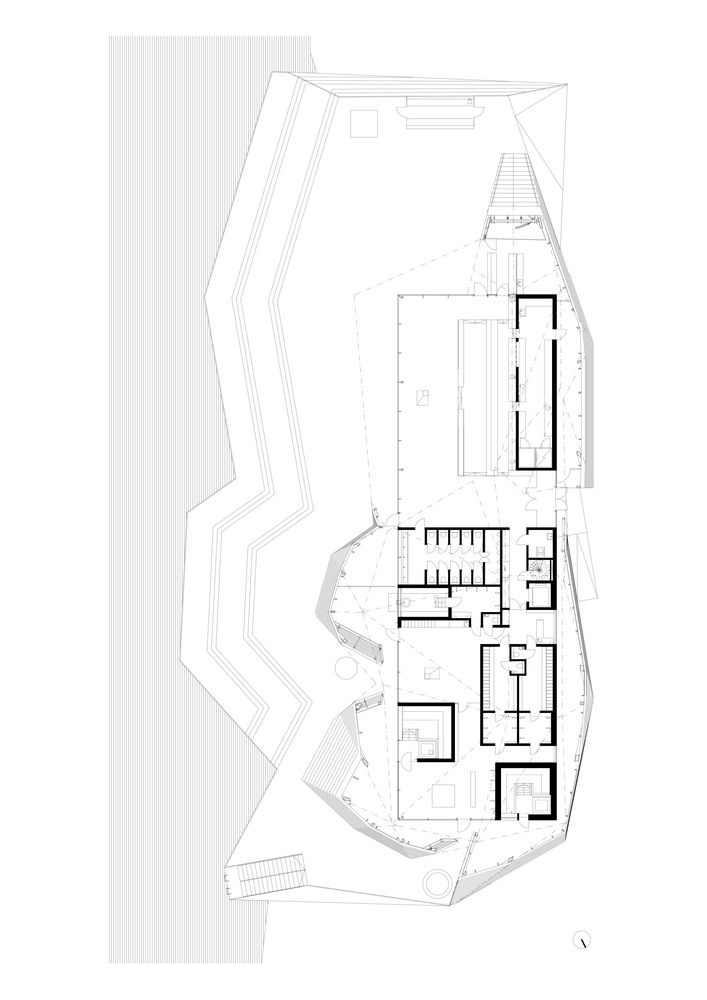
Ground floor plan

Section
All images © kuvio.com
> via Avanto Architects
